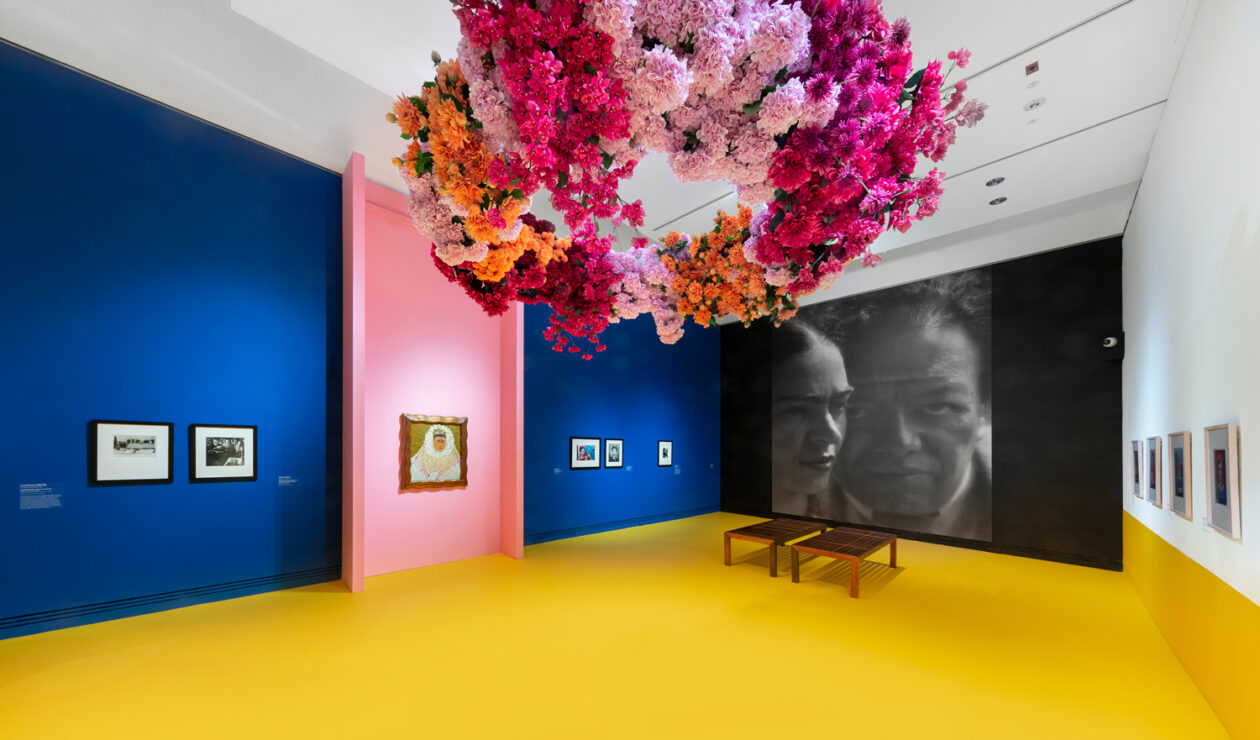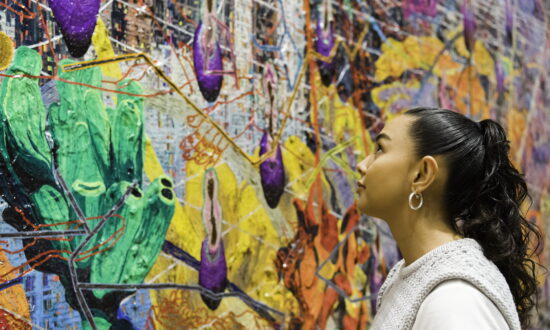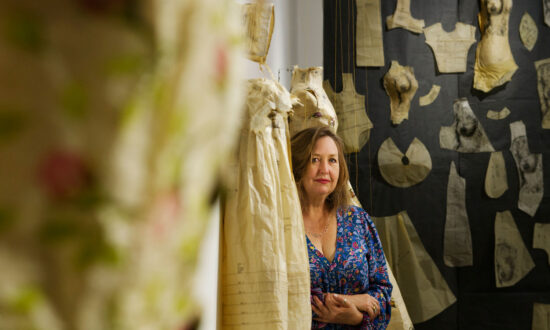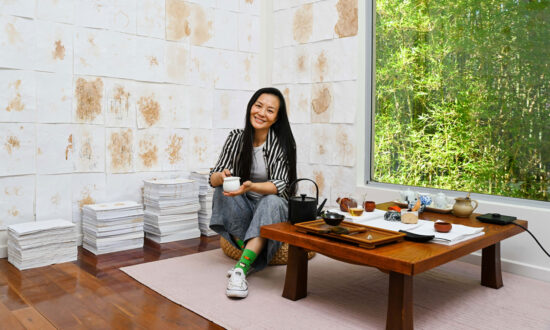Historic film footage of Mexico City is projected onto a wall in the first room of Frida & Diego: Love & Revolution. It’s not part of the Jacques and Natasha Gelman Collection of 20th Century Mexican Art that populates the exhibition, but was selected by curator Tansy Curtin to set the scene for what is to come and the world in which the artists lived and worked.
“It gives you a sense of what it was like in the 1920s… 22 million people live in Mexico City now, and there were under a million in 1920,” she tells InReview. “So this gives you an idea what the architecture was like – the Spanish architecture, but also a deep understanding of the Aztec history.”
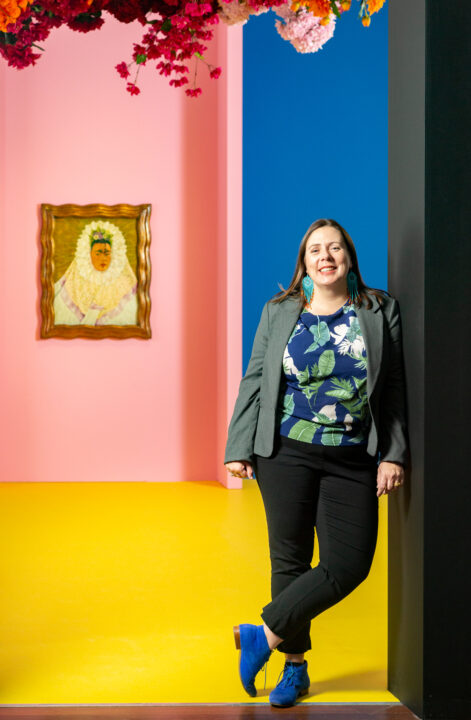
Tansy Curtin, curator of international art pre-1980 at AGSA. Photo: Saul Steed / supplied
Frida & Diego: Love & Revolution, opening at AGSA this weekend, is said to be the largest display of Mexican modernism seen in Australia. As well as artworks by Kahlo and Rivera – including self-portraits by Frida and large-scale reproductions of Diego’s murals – there are paintings and photographs by their friends and contemporaries, and exhibits that offer a glimpse of the pair’s lives and politics.
Jacques and Natasha Gelman, who both moved to Mexico in the late 1930s, assembled their extensive private collection of Mexican modern art over more than 50 years from the early 1940s, with Curtin saying it reflects their personal passions.
“And it doesn’t have a permanent home, so it’s always on tour. That’s very lucky for us, because people like Frida Kahlo and Diego Rivera are artists we don’t get to meet in Australia very often because they’re just not in collections.”
The Love & Revolution exhibition space, designed by Grieve Gillett Architects, features vibrant coloured walls that differentiate the eight different themes through which Curtin has arranged the works. The curator of international art pre-1980 at AGSA says she wanted to present the collection within the context of Mexican history but also the milieu of modernist artists working in Mexico in the 20th century.
“The themes don’t have to be experienced in a linear progression… it’s a way to come in and out and experience it in your own way.”
One room displays numerous photos of Kahlo and Rivera with their family and friends, while another features a moving image work by photographer Nickolas Muray that shows the couple at their home, La Casa Azul. While they had a complex relationship – during which they both had numerous affairs and were married, divorced and married again – the film offers a glimpse of the intimacy between them.
Beyond this, in a room representing a traditional Mexican courtyard, is a colourful display of reproductions of some of Kahlo’s dresses and traditional Tijuana clothing. The backdrop is a reproduction of Rivera’s 1947 mural Dream of a Sunday afternoon in the Alameda Central, Hotel del Prado, Mexico City.
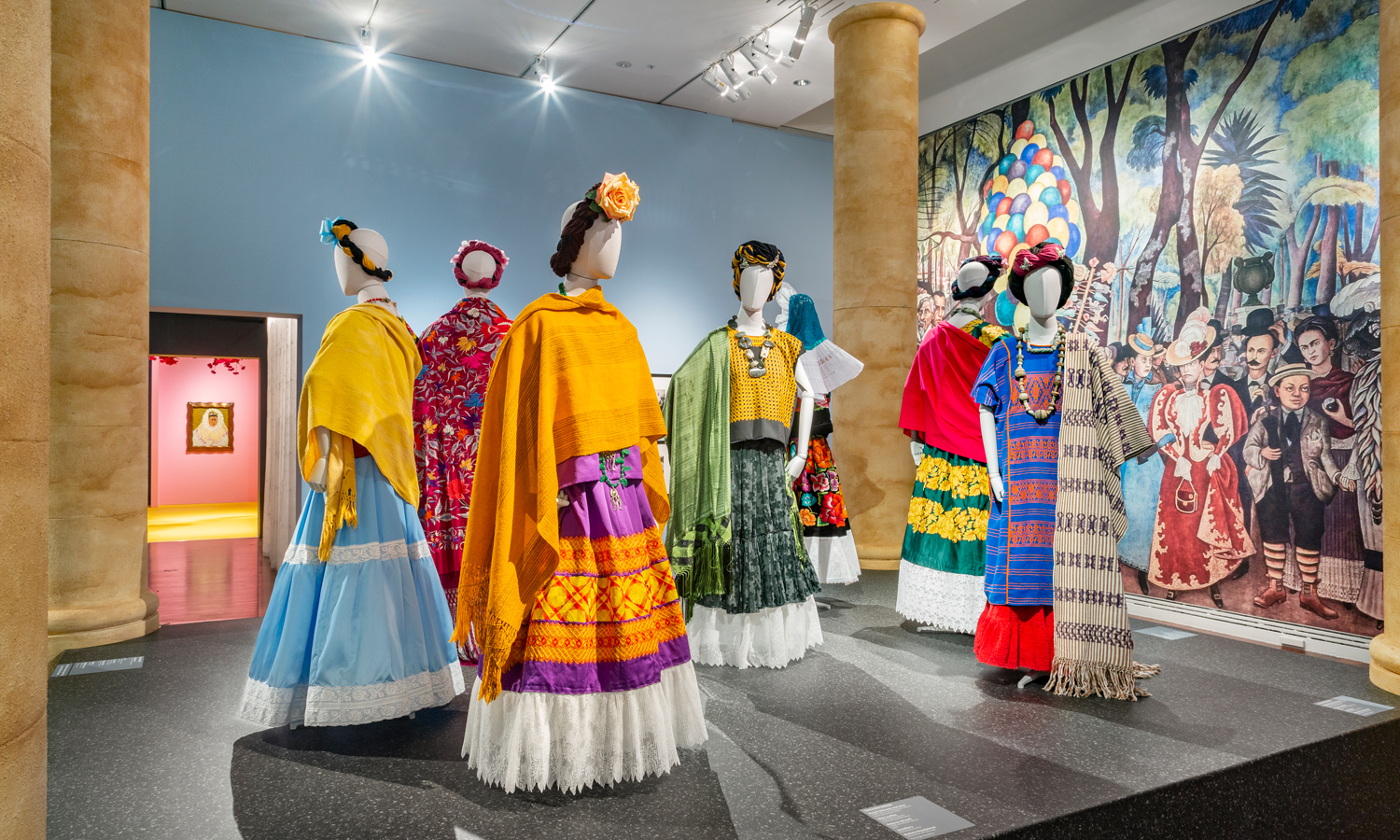
An installation view of Frida & Diego: Love & Revolution at the Art Gallery of South Australia. Photo: Saul Steed / supplied
Curtin says a space featuring a curtained-off single bed offers “a little sombre moment” – an opportunity to reflect on how Kahlo’s life was irrevocably changed by the debilitating injuries she suffered in a bus crash at just 18. Her parents placed a mirror under the bed’s canopy, enabling her to paint her self-portraits.
“We do talk about Frida’s physical disability, the physical pain, and we can see that in a lot of the imagery,” Curtin says, before moving into a much brighter space decorated with a huge garland of flowers floating from the ceiling.
“Then we come into this moment of revelation: it’s joyful, it’s celebratory, it’s a homage without being too religious… it’s a moment for us to consider the legacy of Frida Kahlo and why we’re still enamoured with her work.”
Below, Curtin shares six of her favourite works in Frida & Diego: Love & Revolution, beginning with a work by Rivera displayed in the space dedicated to the theme Mexicanismo and Arte Popular, which highlights the renewed engagement with folk art that occurred in Mexico following the revolution.
Calla lily vendor, 1943, by Diego Rivera
“Rivera is known for his murals, and you can see the mural style in his work – it’s incredibly flat, the picture, and it’s thought they probably sanded back the surface to create that extra flatness to it. The colour is incredibly beautiful as well – luminous in this light. And it’s very much about an everyday Mexican scene – you’ve got the calla lily vendors selling this iconic flower of Mexico… it’s a beautiful expression of traditional culture in Mexico and that’s what Diego was really interested in. He was interested in raising up everyday people to being subjects for fine-art conversations.”
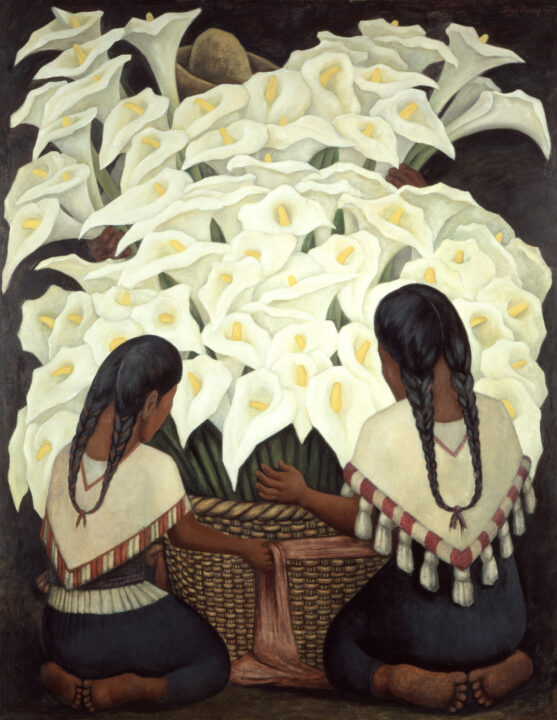
Diego Rivera, Calla lily vendor, 1943, Mexico City, oil on board, 150.0 x 120.0cm; The Jacques and Natasha Gelman Collection of 20th Century Mexican Art and the Vergel Foundation.
Self-portrait with necklace, 1933, Frida Kahlo
“I really love this. It’s so incredible because she’s put nothing else in it: it’s just her but she holds it so beautifully and she gazes directly back at us and I think that’s one of the reasons we find her work so engaging. It’s the way that it feels like she’s speaking to us: every single one of us. And she’s quite harsh on her own looks: she exaggerates her facial hair, she kind of takes away the soft elements; she makes herself a lot harsher but she’s still so incredibly engaging… it’s 1933 so she’s in her 20s and she’s already experiencing quite intense pain in her life after her bus crash at age 18. You can see how she’s starting to engage with the Mexican costume; she’s got a beautiful Mesoamerican [pre-Columbian] stone necklace on, and she’s got the beginning of the plaited hair that we see more and more in her work.”
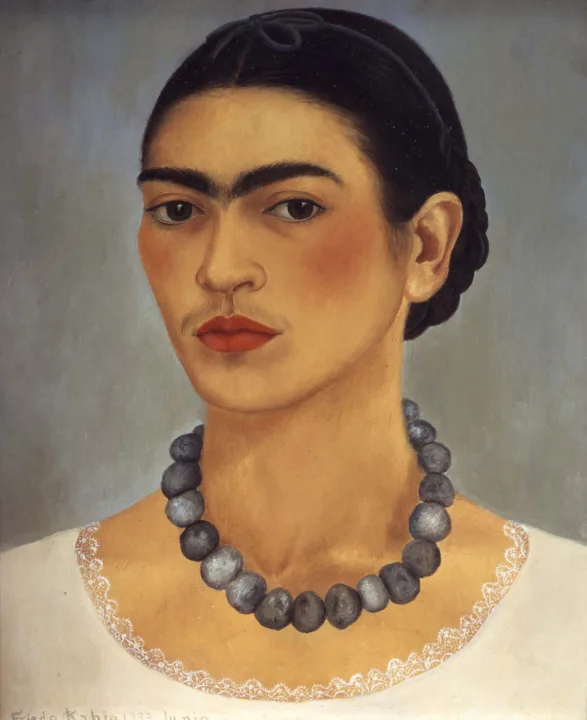
Frida Kahlo, Self-portrait with necklace, 1933, Coyoacan, Mexico, oil on metal, 35.0 x 29.0cm; The Jacques and Natasha Gelman Collection of 20th Century Mexican Art and the Vergel Foundation.
Portrait of Jacques Gelman, 1957, by Gunther Gerzso
“One of the things that’s really great about this exhibition and collection is that we get to discover artists that we’ve never seen before. Gunther Gerzso is a revelation for us: a wonderful modernist abstraction artist. He actually started off as a theatrical scene painter; Jacques Gelman worked in cinema and film, so that’s how he met Gerzso. This is a portrait of Jacques Gelman and it’s thought that this here [a depiction of what looks like part of a hand, towards the centre of the painting] is Natasha Gelman’s hand holding Jacques’s heart, which is very beautiful and really romantic. It’s a lovely painting.”
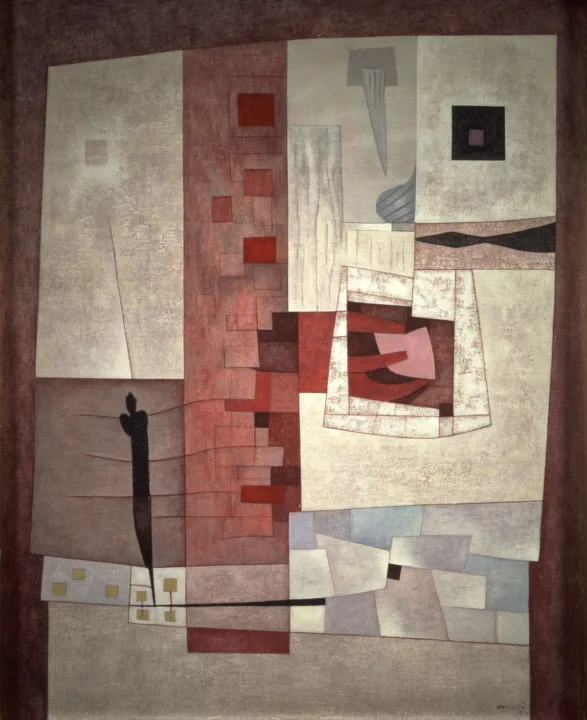
Gunther Gerzso, Portrait of Jacques Gelman, 1957, Mexico City, oil on canvas, 72.0 x 60.0cm; The Jacques and Natasha Gelman Collection of 20th Century Mexican Art and the Vergel Foundation.
The Bride who Becomes Frightened when she Sees Life Opened, 1943, Frida Kahlo
“Frida was very interested in votive paintings, and in her house she had a whole wall of beautiful votive paintings. Those paintings are really about giving thanks to a saint… she’s taken that idea of the votive painting and turned it into a kind of contemporary painting. It’s about the bride who sees life opened up, it’s about sexual awareness, it’s about awakening of the body. There’s a lot of surreal elements, too – the owl; what does the owl represent? Is it wisdom? It’s got all these elements of traditional Mexican art with still life, modernism and that kind of hidden storytelling.”
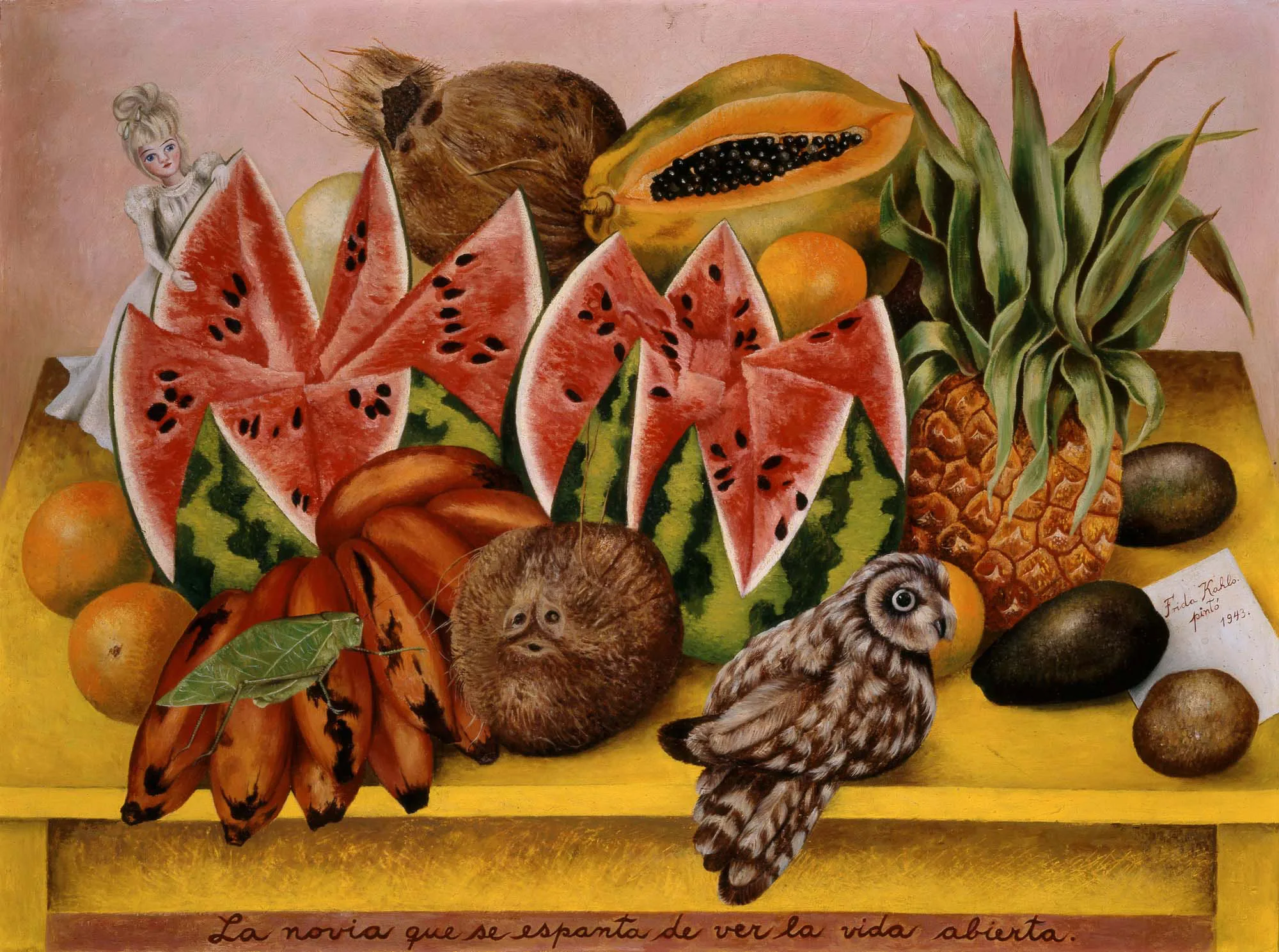
Frida Kahlo, The Bride who Becomes Frightened when she Sees Life Opened, 1943, Coyoacan, Mexico, oil on canvas, 63 x 81.5cm; The Jacques and Natasha Gelman Collection of 20th Century Mexican Art and the Vergel Foundation.
Frida at ABC Hospital holding a mirror, 1950, Juan Guzman
“This is quite incredible because it talks about Frida’s inability to not paint: she had to keep painting. So these wonderful Juan Guzman photographs are of her when she’s in the ABC Hospital in Mexico City after one of her many operations and she’s wearing a plaster cast that she painted, because she painted everything… even in hospital she’s still glamorous, she’s still wearing these incredible outfits and all of her jewels. It’s quite amazing to think of the creative impetus.”
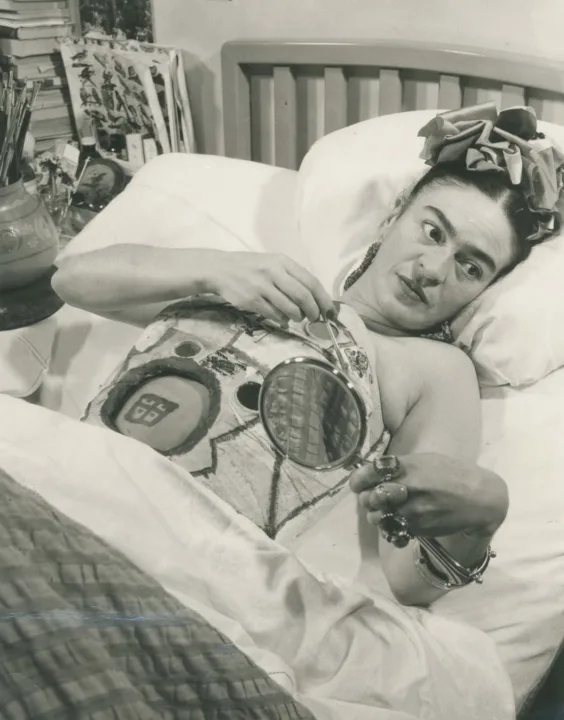
Juan Guzman, Frida at ABC Hospital holding a mirror, Mexico, 1950, Mexico City, gelatin-silver photograph, 24.1 x 19.0cm; Throckmorton Fine Art, New York.
Frida Kahlo on Bench #5, 1938, by Nickolas Muray
“This is a really well-known photograph… it is a beautiful work and of course, it shows that power of her image and the colour photography – it’s a carbon print, which gives it incredible colour saturation. She was on the cover of Mexican Vogue with this image as well, which shows the power of an artist to be a kind of glamorous model at the same time as not being traditionally beautiful, [not] meeting the western concept of beauty, and I think that’s one of the reasons why today we are still enticed by her image… it was probably taken at Nickolas’s house in New York.”
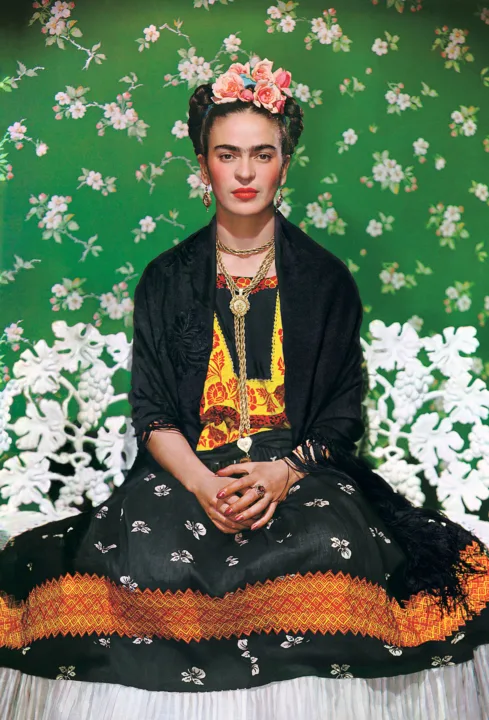
Nickolas Muray, Frida Kahlo on Bench #5, 1938, New York, USA, carbon print, 45.5 x 36cm; The Jacques and Natasha Gelman Collection of 20th Century Mexican Art and the Vergel Foundation, © Nickolas Muray Archive.
Frida & Diego: Love & Revolution is showing at the Art Gallery of South Australia from June 24 to September 17.
Support local arts journalism
Your support will help us continue the important work of InReview in publishing free professional journalism that celebrates, interrogates and amplifies arts and culture in South Australia.
Donate Here
